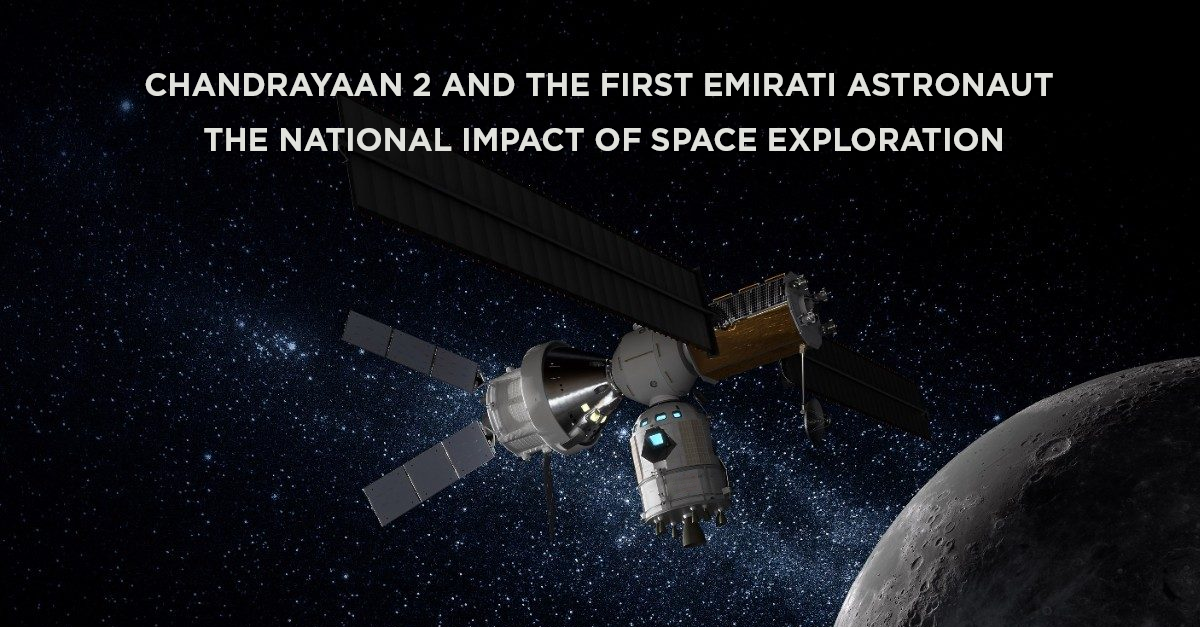As I begin to pen my thoughts, the UAE has just launched its first man to space. Astronaut Hazza Al Mansoori blasted off towards the International Space Station (ISS) on September 25, as the whole world watched with baited breath. It brings to my mind the words of Buzz Aldrin, when he took off for the moon with Neil Armstrong, 50 years ago. “When you believe that all things are possible and you are willing to work hard to accomplish your goals, you can achieve the next ‘impossible’ dream. No dream is too high!”
Man’s fascination with space exploration and the moon started more than half a century ago. Yuri Gagarin became the first human being in space in 1961, launched in the Soviet Union’s Vostok 1 spacecraft. The next big progression was made by the Americans, when Neil Armstrong and Edwin “Buzz” Aldrin first landed on a non-terrestrial body, the moon, while their colleague Michael Collins orbited the earth’s satellite. In those historic moments, it was indeed, “one small step for a man, a giant leap for mankind”.
Fifty years later
This year as we celebrate the 50th anniversary of the Apollo 11’s moon landing, two significant things have made headlines in space research. India launched its Chandrayaan 2 mission aiming to land the orbiter Vikram on the South Pole of the moon, and UAE chose its first man, an Emirati national Hazzaa Al Mansoori, to go to space.
For India, shortly before touchdown, the robotic lander Vikram fell out of contact with the mission control. The Indian Space Research Organization (ISRO), says that the spacecraft stopped communicating with Earth when it was within 1.3 miles of the lunar surface. Had the landing been successful, it would have made India the fourth country in the world to touch down anywhere on the lunar surface, and only the third nation to operate a robotic rover there.
Contribution to lunar science
But despite the loss of communication with the lander, the bold Chandrayaan-2 mission will hugely contribute to Lunar science and will enrich mankind’s understanding of the moon’s evolution and mapping of the minerals and water molecules in the polar regions. This will undoubtedly be immensely useful to the global scientific community.
Chandrayaan 1, the first part of the Chandrayaan mission, had intended to search the moon’s surface for deposits of helium-3, which can be used to power fusion based nuclear reactors. Helium-3 is abundant on the moon, compared to Earth, and would require difficult extraction processes, but once that technology is cracked, it could theoretically meet Earth’s energy demands, several decades over.
Historic moment for the UAE
The UAE’s has also begun its space exploration era this year, bringing to my mind that historic moment almost 43 years ago when the nation’s founding father Sheikh Zayed hosted the Apollo 17 crew in Abu Dhabi. The next step for the UAE is Mars. The Emirates Mars Mission is scheduled for next year and is the perfect way to celebrate its 50th anniversary as the nation gets to explore the far reaches of space.
National Impact
This brings me to the question of the national impact of space exploration. What do countries seek to achieve from satellite launches or moon landings or even sending astronauts to space or probing for life in other planets of the solar system?
The need to push the boundaries of knowledge is a natural urge for all mankind. We want to answer fundamental questions about our solar system, and studying the space and the planets help us unravel the mysteries of our universe. Such missions also unleash innovation, leading to future research and development. Space missions engage with the public, providing a sense of thrill and adventure second to none.
Both the Chandrayaan 2 mission and astronaut Hazza Al Mansoori’s voyage have generated massive interest and excitement in their respective nations, the enthusiastic support of the leaders of the two countries, as well huge local and international media coverage.
For India, the mission was the perfect test bed for validating technologies that are required for future space exploration as well as resource utilization. For the UAE too, the space initiative holds the key to improve research and development programmes in the country and platforms for further innovation.
Ripple effect
Leaders of both nations, Prime Minister Narendra Modi and His Highness Sheikh Mohammad Bin Rashid Al Maktoum, Vice President of the UAE and ruler of Dubai, have stressed on the fact that such missions encourage the next generation to pursue the fields of science, technology, engineering and mathematics (STEM). In the years to come India and the UAE will need more space scientists, engineers and technicians. These missions will spark a ripple effect in society, just like the impact of the moon missions in the US, post the 1960s.
I am sure there is already a huge fan following of astronaut Hazza Al Mansouri, with many young Emiratis now dreaming of being a part of the UAE Astronaut Programme under the Mohammad Bin Rashid Space Centre (MBRSC). The University of Sharjah with the Sharjah Academy for Astronomy, Space Sciences and Technology, Khalifa University’s space sector, the UAE University’s new Space Science Track and the American University of Sharjah’s Astrophysics and Space Science programs will no doubt benefit hugely.
Harbingers of a Bright Future
In India, the huge support for ISRO proves that the country looks at our space initiatives as a matter national pride. The Indian Prime Minister in a tweet reiterated the feeling of his countrymen when he said “India is proud of our scientists! They’ve given their best and have always made India proud. These are moments to be courageous, and courageous we will be!”
For the Arab community as a whole, this moment marks a new age that continues a great tradition. There are several historical eras in which Arabia inspired great discoveries in the fields of astronomy and science. Today there is an opportunity to reignite that golden age of discovery and the launch of the UAE’s first astronaut into space will be the catalyst that makes this possible.

